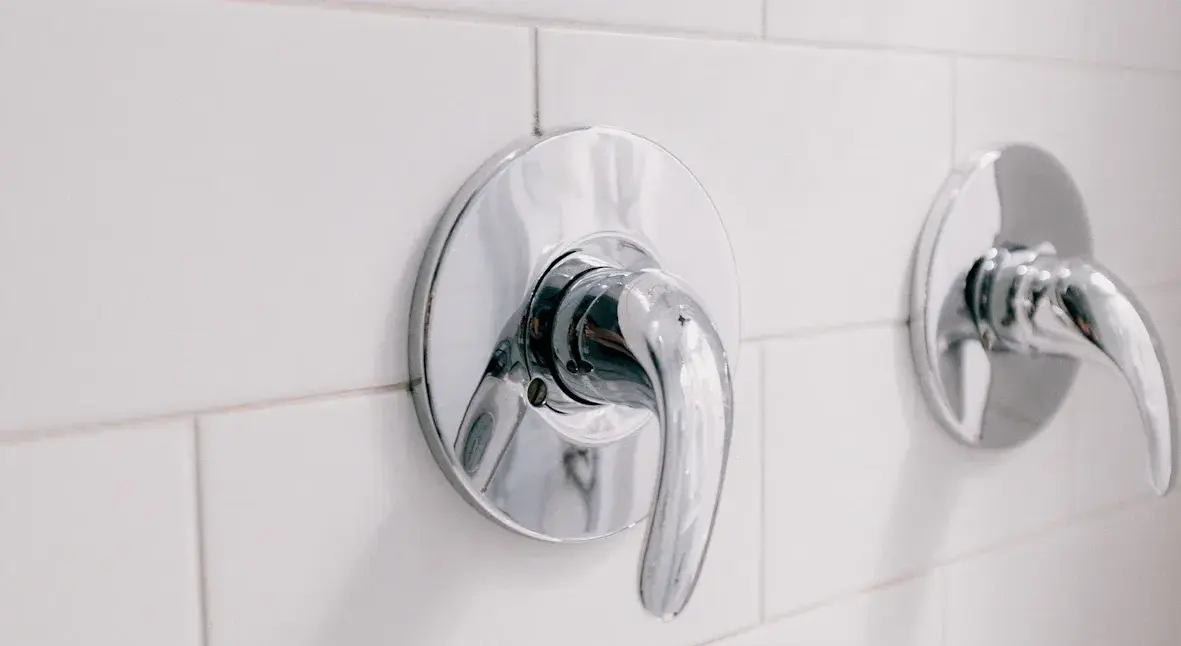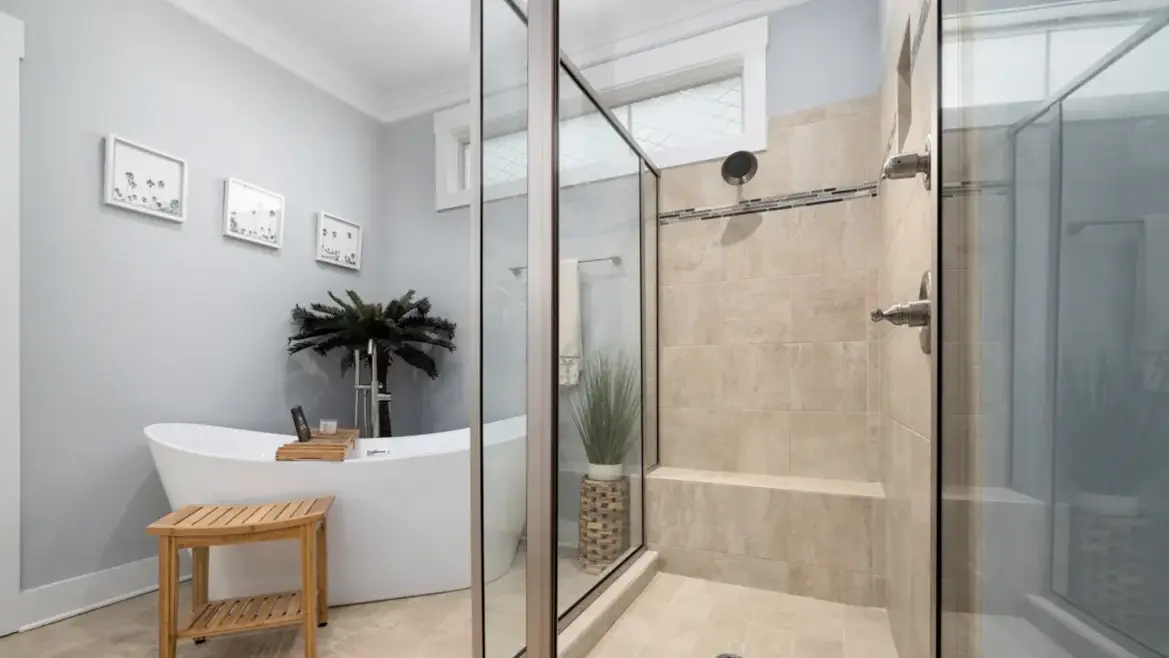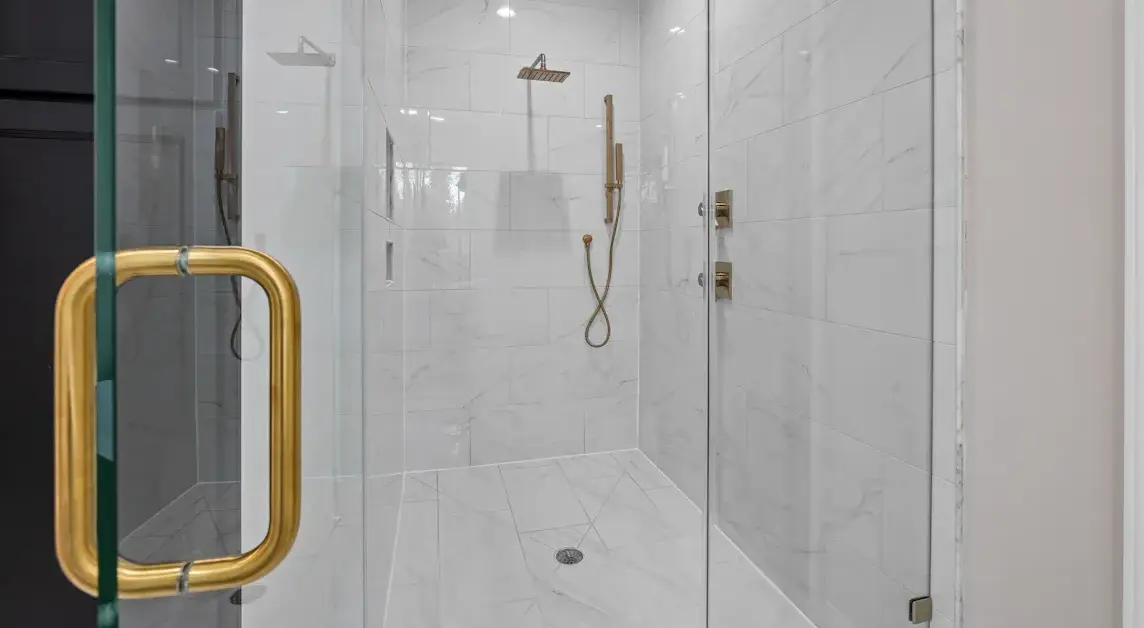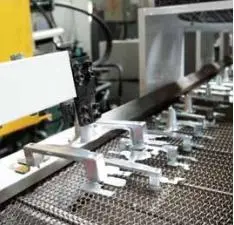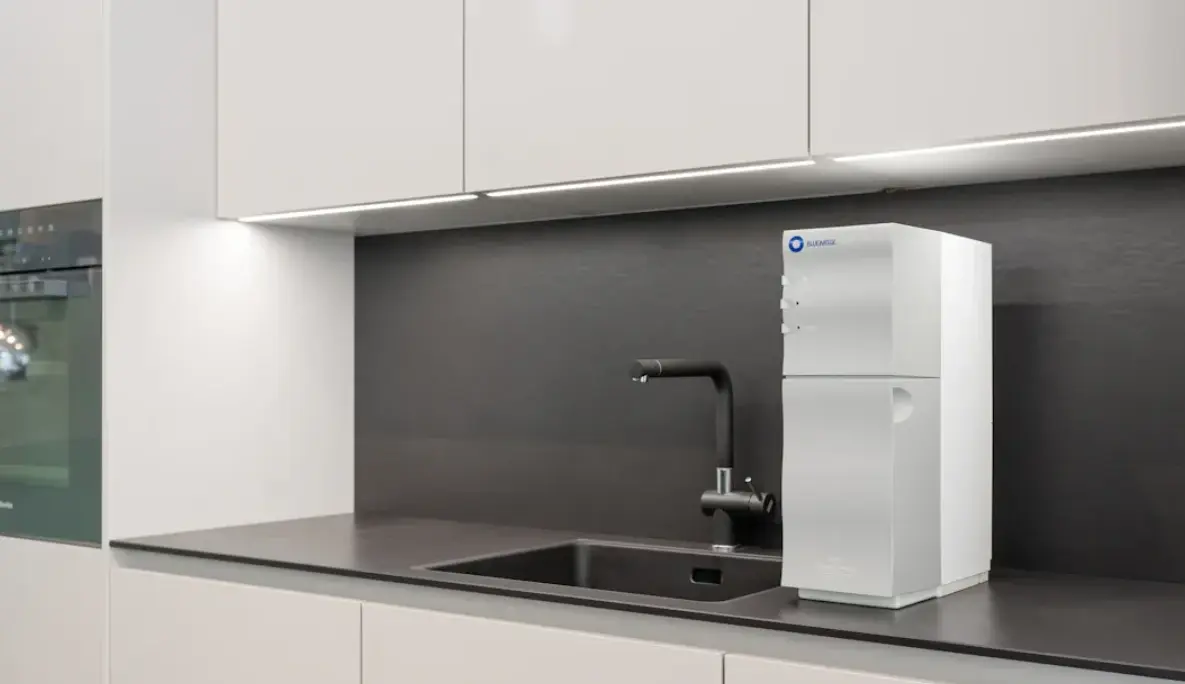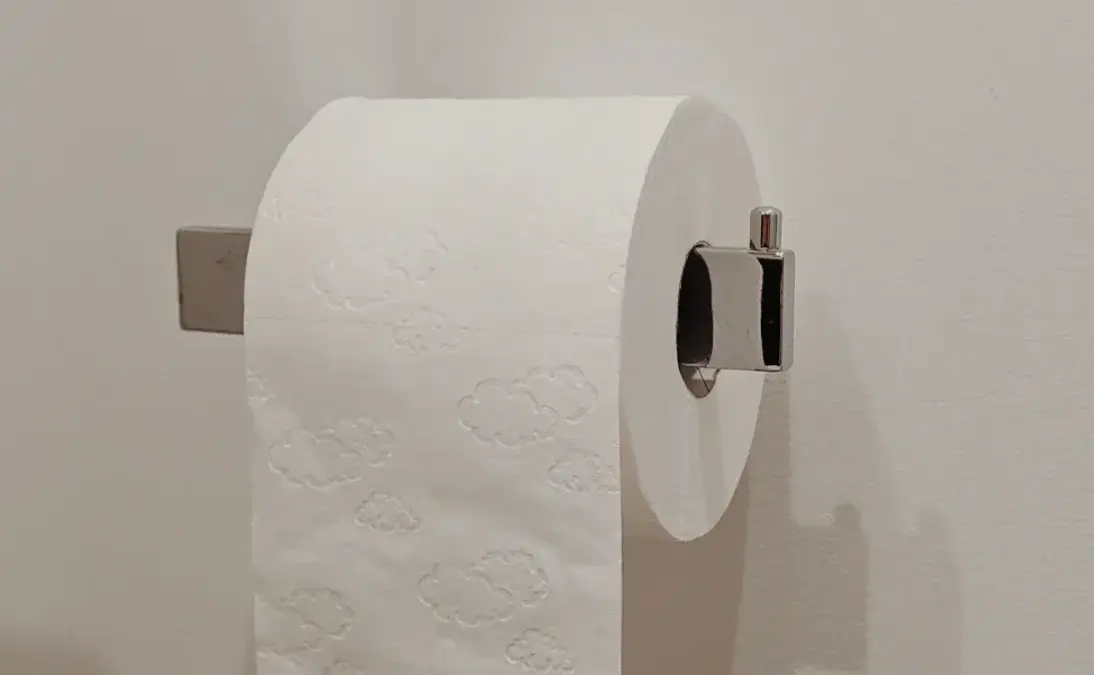Custom Door Handles for Hotels: Sourcing Checklist for Procurement Teams
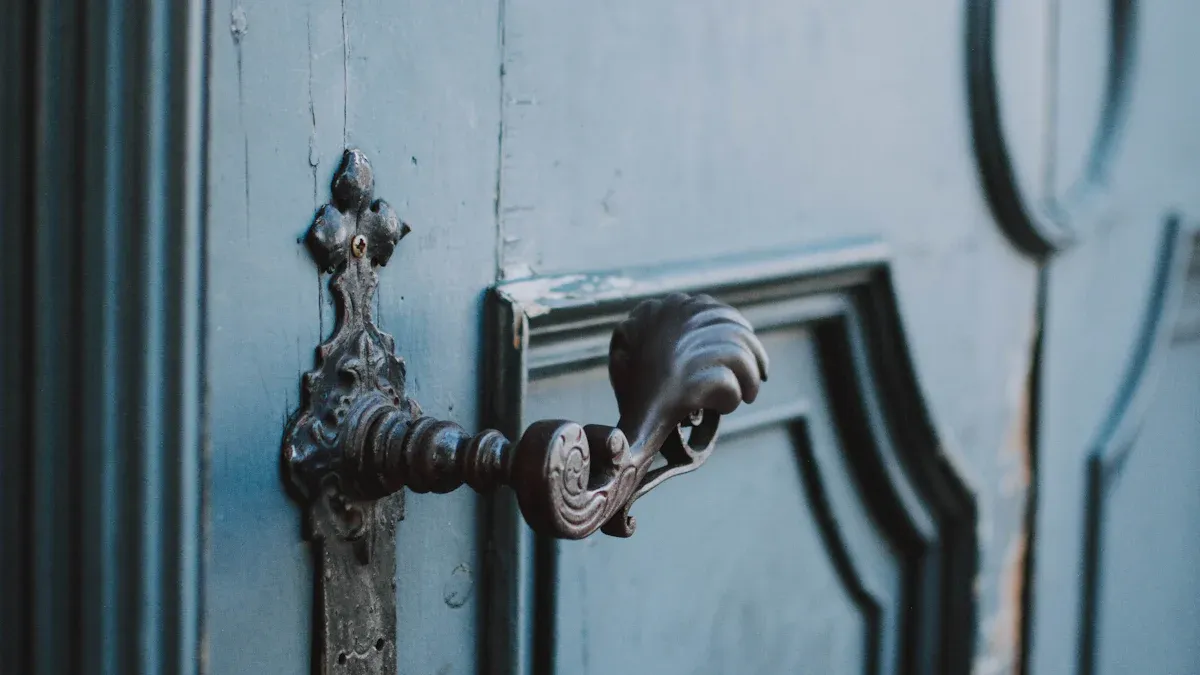
Selecting the right custom Door Handles hotel projects demand precision and attention to detail. Procurement teams benefit from a structured sourcing process that ensures every element aligns with the hotel's vision. The choice of Door Handles shapes the guest’s first impression, supports brand consistency, and streamlines daily operations. Thoughtful selection leads to improved durability, safety, and a seamless guest experience.
Key Takeaways
- Start by clearly defining project needs, including brand alignment, design themes, durability, security, and accessibility to ensure Door Handles fit the hotel’s vision and guest requirements.
- Choose vendors with proven hospitality experience, strong customization options, and positive references to reduce risks and guarantee quality results.
- Select materials and finishes that balance durability, maintenance ease, and style, considering options like brass, stainless steel, Zinc Alloy, and aluminum alloy.
- Work closely with vendors during design and prototyping to refine concepts, approve samples, and confirm branding for a perfect final product.
- Request detailed quotes and confirm realistic lead times to keep the project on budget and on schedule, while planning installation logistics carefully.
- Implement strict quality assurance with inspections, certifications, and warranty reviews to ensure safety, compliance, and long-lasting performance.
- Use a comprehensive sourcing checklist to track every step, assign responsibilities, and avoid costly mistakes, improving efficiency and project success.
- Custom Door Handles add value by enhancing guest experience and reinforcing brand identity, making them a smart investment despite higher upfront costs.
Define Project Requirements for Custom Door Handles Hotel
Identify Brand Standards and Design Themes
Align with Hotel Brand Guidelines
Procurement teams begin by reviewing the hotel’s brand guidelines. These guidelines define the visual identity and guest experience. Door Handles serve as a tactile extension of the brand. Teams should ensure that every custom handle reflects the hotel’s values, color palette, and logo usage. Consistency across all touchpoints, including hardware, strengthens brand recognition and guest trust.
Match Interior Design Schemes
Interior designers often select materials, shapes, and finishes that complement the overall décor. Teams must coordinate with design professionals to match the custom Door Handles hotel projects with existing themes. For example, a modern boutique hotel may favor sleek stainless steel, while a heritage property might require ornate brass. This alignment creates a cohesive and inviting atmosphere for guests.
Determine Functional Needs
Assess Durability and Usage Demands
Hotels experience high traffic, especially in guest rooms and public areas. The 'Luxury Door Handle Market' report highlights the importance of durability and quality for commercial applications. Procurement teams should specify hardware that meets or exceeds industry standards for longevity. The ANSI/BHMA grading system provides a benchmark, with Grade 1 hardware recommended for areas with heavy use. This approach reduces maintenance costs and ensures reliable performance.
Evaluate Security and Safety Features
Security remains a top priority in hospitality environments. Teams should select Door Handles that support advanced locking systems, such as electronic hotel locks with mobile credentials. Mortise lock bodies offer enhanced durability, while master keying systems provide secure access for staff. Compliance with fire code requirements, including single-motion exit and self-latching hardware on rated doors, further protects guests and staff.
Consider Accessibility Requirements
Accessibility ensures that all guests can use door hardware comfortably. Teams must choose handles that comply with ADA standards. Lever handles should require no more than 5 lbs of operating force and allow smooth operation without tight grasping or twisting. These features make custom Door Handles hotel projects inclusive and compliant with regulations.
Tip: Always verify local code variations and facility-specific requirements before finalizing specifications.
Specify Quantity and Types
Calculate Total Number of Handles Needed
Accurate quantity estimation prevents delays and budget overruns. Teams should create a detailed inventory of all doors requiring custom handles. This includes guest rooms, suites, meeting spaces, restrooms, and back-of-house areas. A comprehensive count ensures that every space receives the correct hardware.
Identify Handle Types by Location
Different areas within a hotel require specific handle types. For example, guest room doors may need electronic lever handles, while public restrooms might use pull handles. Teams should categorize handle types by location and function. This step streamlines ordering and installation, ensuring each area receives the most suitable solution.
- Guest rooms: Electronic lever handles
- Public areas: Pull or push handles
- Staff-only zones: Master-keyed handles
- Emergency exits: Panic bars or single-motion exit handles
A structured approach to defining project requirements sets the foundation for a successful custom Door Handles hotel sourcing process. Teams that address brand, function, and quantity early in the project avoid costly revisions and deliver a seamless guest experience.
Vendor Selection Criteria for Custom Door Handles Hotel
Selecting the right vendor shapes the success of any custom door handles hotel project. Procurement teams must evaluate suppliers with a structured approach to ensure quality, reliability, and alignment with project goals.
Assess Vendor Experience
Review Hospitality Project Portfolio
A vendor’s portfolio reveals their ability to deliver on complex hospitality projects. Teams should request detailed case studies and visual documentation of previous work in hotels. A strong portfolio demonstrates experience with diverse design themes, technical requirements, and large-scale orders. Vendors who showcase successful collaborations with well-known hotel brands often understand the unique demands of the hospitality sector.
Check Industry Reputation
Industry reputation signals a vendor’s reliability and professionalism. Procurement teams should research online reviews, industry awards, and trade association memberships. Vendors with positive feedback from hotel clients and recognition within the industry tend to deliver consistent results. Teams can also consult with peers or industry contacts for informal recommendations.
Note: A vendor with a proven track record in hospitality projects reduces risk and ensures smoother project execution.
Evaluate Customization Capabilities
Confirm Design Flexibility
Customization stands at the core of hotel hardware procurement. Teams should verify that the vendor offers a wide range of materials, finishes, and design options. The ability to adapt to unique brand standards and interior themes sets top vendors apart. Flexible design services allow hotels to create signature looks that enhance guest experience and reinforce brand identity.
Assess Technical Support for Custom Orders
Technical support plays a crucial role in custom projects. Vendors should provide expert guidance throughout the design, prototyping, and manufacturing stages. Teams benefit from clear communication, detailed technical drawings, and responsive problem-solving. Reliable support ensures that custom door handles hotel projects meet both aesthetic and functional requirements.
Review References and Past Projects
Request Client Testimonials
Client testimonials offer direct insight into a vendor’s performance. Procurement teams should request references from recent hotel projects. Positive feedback on communication, product quality, and delivery timelines builds confidence in the vendor’s capabilities. Testimonials also highlight the vendor’s ability to address challenges and adapt to project changes.
Analyze Case Studies
Case studies provide quantitative and qualitative evidence of vendor success. Teams should look for metrics such as occupancy rates, average daily rate (ADR), and revenue per available room (RevPAR) before and after hardware upgrades. High ADR and RevPAR reflect effective room pricing and utilization, while strong customer satisfaction scores and online reputation indicate positive guest experiences. Other key indicators include EBITDA, return on investment (ROI), and repeat business rates. These metrics help procurement teams assess the long-term value delivered by the vendor.
- Occupancy and Average Rate: Indicate market demand and pricing effectiveness.
- Revenue per Available Room (RevPAR): Measures revenue efficiency per room.
- EBITDA: Shows profitability and cost coverage.
- ROI: Assesses net benefits relative to investment.
- Customer Satisfaction Level: Reflects guest loyalty and potential for repeat business.
- Online Reputation: Influences customer decisions and overall profitability.
Procurement teams who prioritize vendors with strong references and measurable project outcomes set the stage for successful custom door handles hotel installations.
Material and Finish Selection for Custom Door Handles Hotel
Selecting the right material and finish for custom door handles hotel projects ensures both visual appeal and long-term performance. Procurement teams must weigh durability, maintenance, and compliance when making these decisions.
Compare Material Options
Brass
Brass offers a classic look and resists corrosion. Many luxury hotels choose brass for its warm tone and ability to develop a unique patina over time. This material suits both traditional and modern interiors. Brass handles often provide a premium feel and can be finished in various ways, such as polished, satin, or antique.
Stainless Steel
Stainless steel stands out for its strength and resistance to rust. Hotels with high-traffic areas benefit from stainless steel handles because they maintain their appearance even after years of use. This material works well in contemporary settings and supports a wide range of finishes, including brushed and mirror-polished.
Zinc Alloy
Zinc alloy provides versatility in design and cost-effectiveness. Manufacturers can mold zinc alloy into intricate shapes, making it ideal for custom designs. It also accepts a variety of finishes, allowing hotels to match handles with other hardware. Zinc alloy handles offer good durability for guest rooms and public spaces.
Aluminum Alloy
Aluminum alloy is lightweight and resists corrosion. Hotels often use aluminum handles in areas where weight matters, such as sliding doors or large panels. This material supports powder coating and anodized finishes, which add color and extra protection.
| Material | Durability | Corrosion Resistance | Design Flexibility | Typical Finishes |
|---|---|---|---|---|
| Brass | High | High | Moderate | Polished, Satin, Antique |
| Stainless Steel | Very High | Very High | Moderate | Brushed, Polished |
| Zinc Alloy | Good | Good | High | Plated, Painted |
| Aluminum Alloy | Moderate | High | High | Anodized, Powder Coated |
Consider Finish Durability and Maintenance
Assess Resistance to Wear and Corrosion
Door handles in hotels face constant use. High-touch areas experience rapid wear, which increases maintenance needs and costs if not managed proactively. Regular inspections and preventive maintenance help reduce breakdowns. Staff training to spot early signs of deterioration prevents expensive repairs. Scheduled refurbishment keeps high-impact areas like door handles in top condition, supporting finish durability.
Evaluate Cleaning and Upkeep Requirements
Enhanced cleaning protocols, especially after Covid-19, have increased labor by up to 50% for high-touch surfaces such as door handles. Cleaning supply costs have risen by about 30% due to more frequent cleaning and stronger disinfectants. Hotels now spend an average of $3.00 more per occupied room on cleaning supplies and PPE for high-touch surfaces. These factors highlight the need for finishes that withstand frequent cleaning without fading or corroding. Durable finishes help control maintenance budgets and keep handles looking new.
Tip: Choose finishes that resist harsh chemicals and frequent cleaning to extend the life of custom door handles hotel installations.
Ensure Compliance with Codes
Fire Safety Standards
Procurement teams must select materials and finishes that meet fire safety standards. Handles on fire-rated doors should not compromise the door’s integrity. Materials must withstand high temperatures and maintain functionality during emergencies.
Local Building Codes
Local building codes may specify acceptable materials, finishes, and installation methods for door hardware. Teams should review these codes early in the project to ensure compliance and avoid costly changes later.
Design and Prototyping for Custom Door Handles Hotel
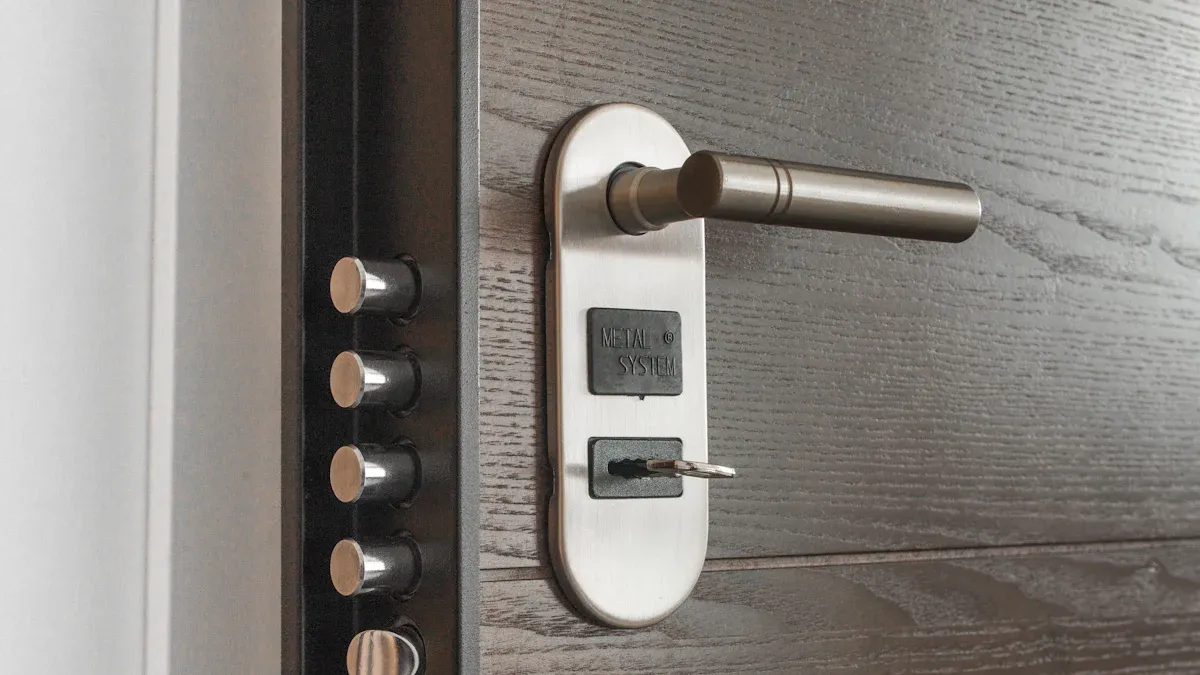
Collaborate on Design Mockups
Share Design Concepts with Vendor
Procurement teams start the design phase by sharing clear concepts with the selected vendor. They often provide sketches, mood boards, or digital renderings that reflect the hotel’s brand and interior style. Vendors with in-house design teams can interpret these ideas and translate them into technical drawings. Open communication ensures that the vendor understands the vision and functional needs for the custom door handles hotel project.
Refine Based on Feedback
Vendors review the initial concepts and offer suggestions based on manufacturing capabilities and material options. Teams and vendors hold design workshops or virtual meetings to discuss adjustments. They may recommend changes to improve durability, cost efficiency, or ease of installation. This collaborative process helps both parties align on the final design direction before moving to prototyping.
Tip: Early feedback from vendors can prevent costly design changes later in the project.
Approve Samples and Prototypes
Evaluate Physical Samples
After finalizing the design, vendors produce physical samples or prototypes. Procurement teams receive these samples for hands-on evaluation. They check the look, feel, and finish to ensure the handle matches the hotel’s standards. Teams also compare the sample to the original design mockups to confirm accuracy.
Test for Fit and Function
Teams install prototypes on actual doors to test fit and function. They assess how the handle operates under real-world conditions. This includes checking for smooth movement, secure attachment, and compatibility with locking systems. Teams document any issues and request adjustments if needed. Testing at this stage ensures the final product performs reliably in daily hotel operations.
Confirm Branding and Logo Integration
Review Branding Placement
Branding elements, such as logos or custom engravings, require careful placement. Teams review mockups and samples to verify that branding appears in the correct location and at the right scale. Proper placement reinforces the hotel’s identity without overwhelming the design.
Approve Final Design Details
Before mass production, teams give final approval on all design details. They confirm that branding, finish, and dimensions meet project requirements. This step locks in the specifications and allows the vendor to proceed with confidence.
A thorough design and prototyping process reduces risk and ensures that every detail of the custom door handles hotel project aligns with the hotel’s vision.
Cost and Lead Time Management for Custom Door Handles Hotel
Effective cost and lead time management ensures that hotel projects stay on budget and on schedule. Procurement teams must address every detail, from initial quotes to final installation, to avoid unexpected delays or expenses.
Request Detailed Quotes
Itemize Costs for Materials and Labor
Vendors should provide a clear breakdown of all costs. Teams need to see separate line items for materials, labor, and any additional services. This transparency helps procurement teams compare bids and identify potential savings. A detailed quote also prevents misunderstandings about what is included in the final price.
| Cost Component | Description |
|---|---|
| Materials | Type and grade of metals, finishes |
| Labor | Manufacturing, assembly, packaging |
| Technical Services | Design, prototyping, engineering |
| Shipping | Freight, insurance, customs |
Include Customization Fees
Custom designs often require extra steps, such as mold creation or special finishes. Vendors should specify these customization fees upfront. Teams can then assess whether the added value aligns with the project’s goals. Clear communication about customization costs avoids budget surprises later.
Tip: Always request a written quote that includes all potential fees for custom door handles hotel projects.
Clarify Lead Times and Delivery Schedules
Confirm Production Timelines
Production timelines can vary based on design complexity and order size. Teams should ask vendors for estimated start and completion dates. Reliable vendors provide realistic schedules and update teams if changes occur. Early confirmation of production timelines helps teams coordinate with other project milestones.
Plan for Shipping and Logistics
Shipping logistics play a critical role in project success. Teams must confirm shipping methods, transit times, and delivery terms. International orders may require customs clearance, which can add time. Tracking information and insurance protect against lost or delayed shipments.
- Confirm shipping carrier and method
- Request tracking numbers for all shipments
- Verify insurance coverage for high-value orders
Plan for Installation Logistics
Coordinate with Installation Teams
Installation requires careful planning. Procurement teams should communicate with installation crews to ensure they understand the product specifications and schedule. Early coordination prevents delays and reduces the risk of installation errors.
Schedule Deliveries to Match Project Phases
Staggered deliveries can help match the pace of construction or renovation. Teams should align shipments with project phases, such as guest room completion or public area upgrades. This approach minimizes storage needs and keeps the project moving forward.
Note: Proper scheduling and coordination reduce downtime and help hotels open on time.
Quality Assurance and Compliance for Custom Door Handles Hotel
Quality assurance and compliance play a vital role in the success of any hotel hardware project. Procurement teams must implement strict standards to guarantee that every handle meets expectations for safety, durability, and regulatory requirements.
Set Inspection and Testing Standards
Define Quality Control Procedures
Procurement teams establish clear quality control procedures before production begins. They outline inspection checkpoints at each stage, from raw material selection to final assembly. Teams often require vendors to document every step. This documentation helps identify and resolve issues early. A robust quality control plan ensures that each handle meets the hotel’s specifications for appearance, strength, and function.
Schedule On-Site Inspections
On-site inspections provide an extra layer of assurance. Teams visit the manufacturing facility to observe production processes and verify compliance with standards. Inspectors check for defects, measure dimensions, and test the operation of sample handles. These visits help catch problems before products ship. Regular inspections also build trust between the hotel and the vendor.
Tip: Schedule inspections at key milestones, such as after the first production run or before final shipment, to maintain consistent quality.
Verify Certifications and Warranties
Request Product Certifications
Certifications confirm that products meet industry standards. Procurement teams request certificates for fire safety, material composition, and environmental compliance. Common certifications include ISO 9001 for quality management and local fire safety approvals. Certified products give hotels confidence in the safety and reliability of their custom door handles hotel installations.
Review Warranty Terms
A strong warranty protects the hotel’s investment. Teams review warranty documents to understand coverage for defects, finish wear, and mechanical failure. They look for clear terms on repair or replacement. A comprehensive warranty signals that the vendor stands behind their product quality.
Ensure ADA and Local Code Compliance
Check Accessibility Standards
Hotels must provide accessible environments for all guests. Teams verify that door handles comply with ADA (Americans with Disabilities Act) requirements. They check handle shape, height, and ease of use. Lever handles that operate with minimal force support accessibility and guest comfort.
Confirm Regulatory Approvals
Local building codes may set additional requirements for door hardware. Procurement teams confirm that all products have the necessary regulatory approvals before installation. They keep records of approvals and certifications for future reference. Compliance with codes prevents costly delays and ensures guest safety.
Ensuring quality and compliance at every stage protects the hotel’s reputation and delivers a superior guest experience.
Final Checklist for Procurement Teams Sourcing Custom Door Handles Hotel
Recap All Sourcing Steps
Review Each Phase of the Process
Procurement teams benefit from a structured review of every sourcing phase. They start by confirming alignment with brand standards and interior design themes. Teams then assess functional needs, including durability, security, and accessibility. Accurate quantity estimation and handle type selection follow. Vendor evaluation comes next, focusing on experience, customization capabilities, and references. Material and finish selection ensures both aesthetics and compliance. Design and prototyping validate concepts and functionality. Cost management and lead time planning keep the project on track. Quality assurance and regulatory compliance complete the process.
Confirm Completion of All Tasks
Teams check off each task as they progress. This approach prevents missed steps and reduces the risk of costly errors. A completed checklist provides confidence that every requirement for the custom door handles hotel project has been addressed.
Tip: Assign responsibility for each checklist item to a specific team member. Accountability improves accuracy and project outcomes.
Provide Downloadable/Printable Checklist
Offer a Ready-to-Use Sourcing Checklist
Procurement teams can streamline their workflow with a ready-to-use checklist. The following template covers all critical steps:
Custom Door Handles Hotel Sourcing Checklist 1. Define Project Requirements - Review brand guidelines - Match interior design themes - Assess durability, security, and accessibility - Calculate quantities and handle types 2. Select Vendor - Evaluate experience and portfolio - Confirm customization capabilities - Review references and case studies 3. Choose Material and Finish - Compare material options - Assess finish durability and maintenance - Ensure code compliance 4. Design and Prototyping - Share and refine design concepts - Approve samples and prototypes - Confirm branding integration 5. Manage Cost and Lead Time - Request detailed quotes - Clarify production and delivery schedules - Plan installation logistics 6. Quality Assurance and Compliance - Set inspection and testing standards - Verify certifications and warranties - Ensure ADA and local code compliance Notes/Customization: [Space for project-specific notes] Include Space for Notes and Customization
A dedicated section for notes allows teams to record project-specific details, changes, or special instructions. This flexibility supports unique hotel requirements and future reference.
Teams who use a comprehensive checklist improve project efficiency and ensure consistent quality across all hotel properties.
A thorough sourcing process for custom door handles in hotels drives operational efficiency and guest satisfaction. Procurement teams who use a structured checklist ensure quality, compliance, and value at every stage. Key performance indicators such as RevPAR and guest satisfaction scores improve when teams align procurement with operational goals.
Partnering with experienced vendors brings cost savings, risk reduction, and consistent quality.
- Strong supplier relationships support better pricing and innovation
- Quality assurance programs protect brand reputation
- Efficient processes enable timely, data-driven decisions
FAQ
What materials work best for hotel door handles?
Brass, stainless steel, zinc alloy, and aluminum alloy all perform well in hotels. Each material offers unique benefits for durability, appearance, and maintenance. Procurement teams should match the material to the hotel’s design and usage needs.
How can procurement teams ensure ADA compliance?
Teams should select lever handles that operate with minimal force and do not require tight grasping or twisting. Reviewing ADA guidelines and consulting with vendors helps ensure compliance for all guests.
What is the typical lead time for custom door handles?
Lead times vary by design complexity and order size. Most projects require 4 to 12 weeks from design approval to delivery. Early planning helps avoid delays.
Can vendors incorporate hotel logos or branding on handles?
Yes, many vendors offer engraving, embossing, or custom finishes to display hotel logos. Teams should confirm branding placement during the design and prototyping phase.
How do teams verify product quality before installation?
Procurement teams request physical samples and conduct on-site inspections. They check for finish, fit, and function. Reviewing certifications and warranties also ensures quality standards.
What certifications should hotel door handles have?
Handles should meet ISO 9001 for quality management. Fire safety and local building code certifications are also important. Teams should request documentation from vendors.
How do teams manage installation logistics for large projects?
Teams coordinate with installation crews and schedule deliveries to match project phases. Staggered shipments reduce storage needs and keep the project on track.
Are custom door handles more expensive than standard options?
Custom handles often cost more due to design, tooling, and branding. However, they provide unique value by enhancing guest experience and supporting brand identity.


